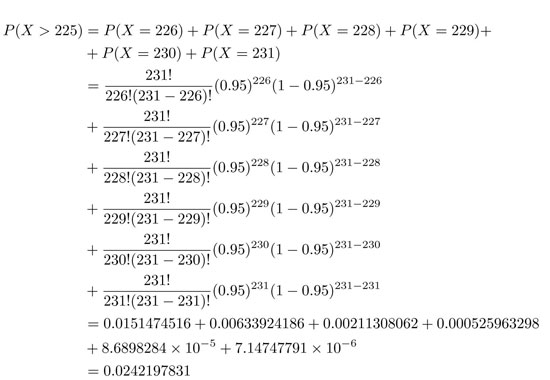| |||
| Math Central | Quandaries & Queries |
|
Question from DON, a student: Overbooking by Airlines This is a simplified version of calculations used by airlines when they overbook |
Hi Don,
Since there is a failure to show up rate of 5% and we want a full plane,
0.95x=220
x=231.57
since the number of passengers is a whole number, we will take the maximum seats the airline will book is 231 (usually best to round down in situations like this).

This is a binomial distribution problem, finding the probability of success or failure. In general, the probability of getting exactly k successes in n trials is given by the probability mass function:
where p is the probability if success (0.95), 1-p is the probability if failure (0.05), k is the successes or maximum number of seats booked (231 seats) and n is the number if trials (more than 225 passengers from part a). Remember we need to include all the probabilities that are greater than 225 to the maximum which is 231

There are about a 2.4% chance that more than 225 passengers will show up. You can solve the other parts of the question using the same method.
Janice
For further help with binomial distributions check out: http://mathcentral.uregina.ca/QQ/database/QQ.09.05/belinda1.html
 |
||
Math Central is supported by the University of Regina and The Pacific Institute for the Mathematical Sciences.